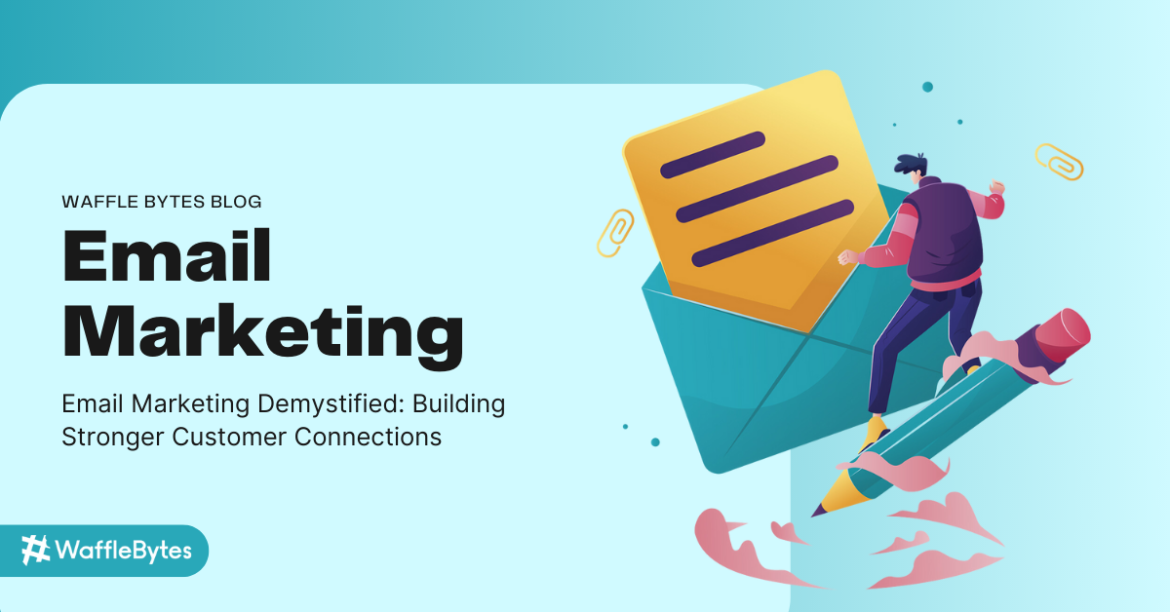In the realm of digital marketing, one strategy continues to stand the test of time: email marketing. With its ability to reach customers directly in their inboxes, email marketing remains a powerful tool for building stronger connections with your audience. In this blog, we’ll try to understand what it is and explore effective strategies to create engaging campaigns that foster lasting customer relationships.
What is Email Marketing?
Email marketing is a digital marketing strategy that involves sending commercial messages or informative content to a group of people through email. It is a direct and targeted approach to communicating with customers, prospects, or subscribers who have opted to receive emails from a particular business or organization.
Email marketing allows businesses to reach their audience directly in their inbox, providing an opportunity to engage, inform, and persuade recipients. It involves sending emails that can range from newsletters, promotional offers, product updates, event invitations, educational content, or any other relevant information that the recipients may find valuable.
Objectives of Email Marketing
The primary objectives of email marketing include:
- Building relationships
Email marketing helps to establish and nurture relationships with customers, prospects, or subscribers by delivering personalized and relevant content directly to their inbox. It allows businesses to stay connected with their audience and build brand loyalty over time.
- Driving conversions
Emails can be designed to encourage recipients to take specific actions, such as making a purchase, signing up for a service, downloading content, or visiting a website. By incorporating compelling calls-to-action (CTAs) and personalized offers, email marketing can effectively drive conversions and generate revenue.
- Increasing brand awareness
Through consistent and well-crafted emails, businesses can reinforce their brand messaging, values, and offerings. By keeping their audience informed about updates, new products or services, and industry insights, email marketing helps to increase brand visibility and awareness.
- Retaining customers
Email marketing is a valuable tool for customer retention. By providing exclusive offers, personalized recommendations, or loyalty rewards, businesses can keep existing customers engaged, satisfied, and coming back for more.
- Analyzing and optimizing
Email marketing allows businesses to track and analyze various metrics, such as open rates, click-through rates, conversions, and unsubscribe rates. By monitoring and analyzing these metrics, businesses can gain insights into their email campaign performance and make data-driven optimizations to improve future campaigns.
Note: Email marketing is a cost-effective and efficient way to communicate with a targeted audience, deepen customer relationships, and drive business growth. However, it is important to adhere to email campaigning best practices, including obtaining permission from recipients, personalizing content, ensuring deliverability, and providing easy opt-out options to maintain a positive sender-receiver relationship.
Proven Email Marketing Strategies
1. Crafting a Compelling Email Strategy
- Defining your goals: Identify the objectives you want to achieve through email marketing. Your objective could be anything from increasing sales, building brand loyalty, or driving website traffic.
- Understanding your target audience: Develop buyer personas to tailor your emails based on customer preferences, demographics, and interests.
- Building an email list: Implement strategies to grow your subscriber base. This can include website sign-up forms, lead magnets, and social media promotions.
2. Designing Engaging Emails
- Creating eye-catching subject lines: Craft compelling subject lines that grab attention and entice recipients to open your emails.
- Personalization and segmentation: Use customer data to personalize email content and segment your audience for more targeted messaging.
- Responsive design: Optimize your email templates for different devices to ensure a seamless experience for recipients.
- Visual appeal: Incorporate visually appealing elements, such as high-quality images, videos, and branded graphics, to enhance engagement.
3. Crafting Relevant and Valuable Content
- Email types and content ideas: Explore various types of emails, including newsletters, promotional offers, product updates, and educational content. Provide value to your subscribers by offering useful information, tips, or exclusive perks.
- Storytelling and compelling narratives: Use storytelling techniques to engage readers emotionally and connect them with your brand’s mission or values.
- Call-to-action (CTA): Include clear and compelling CTAs. CTA prompts users to take an action, like making a purchase, visiting your website, or engaging on social media.
4. Automation and Personalization
- Email automation: Implement automated workflows triggered by specific actions or events, such as welcome emails, abandoned cart reminders. Automation saves time and delivers timely, relevant messages to subscribers.
- Dynamic content: Use dynamic content to personalize emails based on subscriber attributes, such as location, past purchases, or browsing behavior.
- Behavioral triggers: Set up triggers that respond to user behavior, such as sending follow-up emails to subscribers who clicked on specific links or downloaded content.
5. Analyzing and Optimizing Campaigns
- Key performance indicators (KPIs): Track metrics like open rates, click-through rates, conversion rates, and unsubscribe rates to evaluate the success of your email campaigns.
- A/B testing: Conduct split tests to experiment with different subject lines, layouts, CTAs, or content variations. Analyze the results to optimize your future campaigns.
- Continuous improvement: Regularly review and analyze email performance data to identify trends, preferences, and opportunities for enhancement. Use insights gained to refine your email marketing strategy.
Conclusion
Email marketing continues to be a vital component of any successful digital marketing strategy. By understanding your audience, crafting engaging content, personalizing messages, and leveraging automation, you can build stronger customer connections, foster brand loyalty, and drive conversions. Embrace the power of email marketing to nurture relationships, stay top-of-mind with your audience, and achieve long-term business growth.

